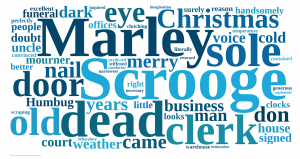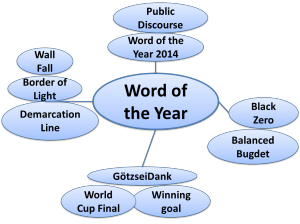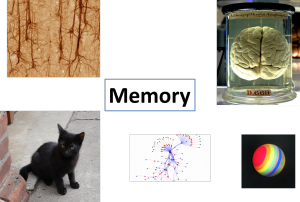In RECALL we aim to augment human memory in several ways; one of which being the strand of semantic memory. Therefore, we started looking into the design of knowledge acquisition points and – due to its prominence in learning and information consumption – reading.
With the advent of the information age and the creation of electronic reading devices – such as mobile phones, e-readers or tablets – our reading behavior has been changing and we are facing new challenges, one of which being information overload. We are bombarded with an abundance of text on a daily basis: news, emails, tweets, feeds, books, papers, articles, technical literature and pleasure readings. But our reading strategy has mainly remained the same.
Speed reading techniques are a much discussed topic that has gained many followers over the last decades. Studies conducted are often disputed, but agree on a natural trade-off between reading speed and comprehension levels. To investigate whether such techniques can be applied to reading on electronic devices and to explore their feasibility, we conducted a series of studies with active reading support, namely with a 1) kinetic and 2) an RSVP (Rapid Serial Visual Presentation) stimulus:


We presented our findings and guidelines for designers of reading apps using such active reading support at this year’s Augmented Human conference [1].
Further, we started investigating how to make use of the priming effect to facilitate text comprehension. Research in psychology has proposed priming as an implicit memory effect where exposure to one stimulus influences the response to a subsequent stimulus. Hence, exposure to contextual information can influence comprehension and recall. We investigate the feasibility of using such an effect to visually present text summaries that are quick to understand and deliver the essence of a text in order to help readers not only make informed decisions about whether to read the text or not, but also to build out more cognitive associations that help to remember the content of the text afterward. In a work-in-progress paper we discuss this approach of providing four different visualizations representing the gist and important details of the text [2]. The four visualizations used include:
Tag Cloud:

Mind Map

Image View:

In-text Highlighting:

We are currently refining the system that extracts these relevant keywords to create such visualizations automatically. By looking over those prior to engaging with a text in detail, readers are supposed to get an overview of its contents in order to be able to decide whether to read the text or not and to create mental associations a priori to help foster long-term memorization. In a series of initial focus groups we were able to derive some design guidelines for such visualizations and their usage before, during and after reading a text, which we described in more detail in [2].
References
[1] Tilman Dingler, Alireza Sahami Shirazi, Kai Kunze, and Albrecht Schmidt. 2015. Assessment of stimuli for supporting speed reading on electronic devices. In Proceedings of the 6th Augmented Human International Conference (AH ’15). ACM, New York, NY, USA, 117-124. DOI=10.1145/2735711.2735796 http://doi.acm.org/10.1145/2735711.2735796
[2] Katrin Angerbauer, Tilman Dingler, Dagmar Kern, and Albrecht Schmidt. 2015. Utilizing the Effects of Priming to Facilitate Text Comprehension. In Proceedings of the 33rd Annual ACM Conference Extended Abstracts on Human Factors in Computing Systems (CHI EA ’15). ACM, New York, NY, USA, 1043-1048. DOI=10.1145/2702613.2732914 http://doi.acm.org/10.1145/2702613.2732914